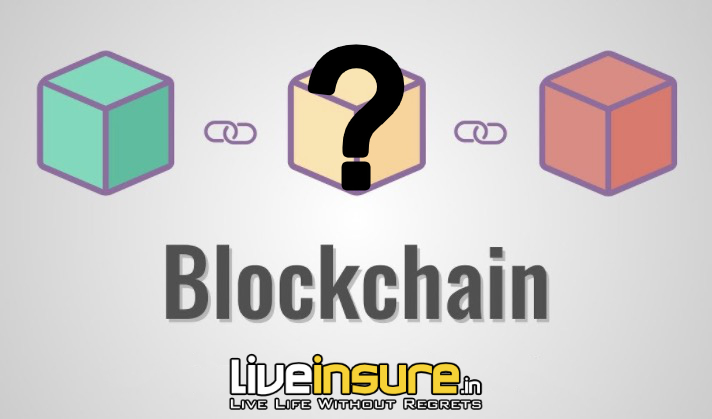What is blockchain?
A blockchain is essentially a digital ledger of transactions that is duplicated and distributed across the entire network of computer systems on the blockchain. Each block in the chain contains a number of transactions, and every time a new transaction occurs on the blockchain, a record of that transaction is added to every participant’s ledger. The decentralised database managed by multiple participants is known as Distributed Ledger Technology (DLT).
Blockchain is a type of DLT in which transactions are recorded with an immutable cryptographic signature called a hash.
This means if one block in one chain was changed, it would be immediately apparent it had been tampered with. If hackers wanted to corrupt a blockchain system, they would have to change every block in the chain, across all of the distributed versions of the chain.
There have been many attempts to create digital money in the past, but they have always failed.
The prevailing issue is trust. If someone creates a new currency called the X dollar, how can we trust that they won’t give themselves a million X dollars, or steal your X dollars for themselves?
Bitcoin was designed to solve this problem by using a specific type of database called a blockchain. Most normal databases, such as an SQL database, have someone in charge who can change the entries (e.g. giving themselves a million X dollars). Blockchain is different because nobody is in charge; it’s run by the people who use it. What’s more, bitcoins can’t be faked, hacked or double spent – so people that own this money can trust that it has some value.
Blockchains such as Bitcoin and Ethereum are constantly and continually growing as blocks are being added to the chain, which significantly adds to the security of the ledger.
1. How does Blockchain work?
A blockchain system consists of two types of record, transactions and blocks. Transactions are simply the actions carried out in a particular period, these are stored together in a block.
What makes blockchain more unique is that each block contains the cryptographic hash of the previous one, thus forming a chain. What a cryptographic hash does is take the data from the previous block and transform it into a compact string. Since these strings are impossible to predict it means that any tampering with the chain is easily detected.
The linking of blocks isn’t the only thing that keeps the chain secure, however. It’s also decentralised, each computer with the software installed has a copy of the blockchain which is constantly updated with new blocks. There is no centralised server holding the transactions and because each new block must meet the requirements of the chain nobody is able to overwrite previous transactions.
Other transaction requirements can be added to define what constitutes a valid entry. In Bitcoin for example a valid transaction has to be digitally signed, it has to spend one or more unspent outputs of previous transactions, and the sum of transaction outputs cannot exceed the sum of input.
2. Blockchain technology – opportunities and advantages
- The blockchain allows our smart devices to speak to each other better and faster.
- Blockchain solves the problem of manipulation. It brings everyone to the highest degree of accountability.
- Online identity and reputation will be decentralized. We will own the data that belongs to us.
- Cryptocurrencies take the power away from governments to control the value of currencies and hand it to people.
- The potential is great for people in the informal economy to exploit the blockchain’s middleman-free way to exchange asset.
- Blockchain technology can more equitably address issues related to freedom, jurisdiction, censorship, and regulation, perhaps in ways that nation-state models and international diplomacy efforts regarding human rights cannot.
- Blockchain-based systems allow for the removal of intermediaries involved in the record keeping and transfer of assets.
- The removal of intermediaries and settlement on distributed ledgers allows for dramatically increased transaction speeds compared to a wide range of existing systems.
- Data entered on the blockchain is immutable, preventing against fraud through manipulating transactions and the history of data. Transactions entered on the blockchain provide a clear trail to the very start of the blockchain allowing any transaction to be easily investigated and audited.
3. Types of Blockchain
There is one important thing for public blockchains: anyone can join the network and can process their transactions anonymously. So, the data will be visible to all members of a public blockchain.
Using the ‘miners’ mechanism is the thing that characterizes members of a public blockchain network. The so-called miners are members who constantly validate data blocks on the public networks. They are always competing with each other to validate data blocks.
Public networks are used for cryptocurrency because transactions are direct between individuals without needing a financial bank. But since the transactions are anonymous, they are a subject of attracting criminal activity.
Once they have validated the transactions, Blockchain miners are awarded in bitcoin of another relevant cryptocurrency.
On the other hand, a private blockchain requires members to be identified. Credentials are what they need in order to validate data blocks and submit transactions. Data might be limited by a private blockchain. But this only will occur to some users and at times it could give access to other members. Private blockchains are proven to be more suitable for an individual business.
4. Can Blockchains Be Hacked?
Since every member has a copy of transactions, it’s proven that Blockchains are very difficult to hack, but they are still not completely secure.
To create false transactions and having them accepted – hackers should have access to multiple members – that is why is so difficult to hack.
One thing that is considered a flaw: protocols. Hackers can potentially use a weakness in the way protocols are operating, and ‘hack’ the system, but still, it is very difficult.
5. How are blockchain transactions validated?
Processing transactions on blockchain also comes with the issue of ensuring that the same cryptocurrency coin isn’t being spent twice. That’s where transaction validation comes into play.
There are two primary ways that transactions on blockchain are validated: proof-of-work (PoW) and proof-of-stake (PoS).
Bitcoin runs on the PoW model. What happens with PoW is that cryptocurrency miners (a fancy term for people with really high-powered computers) compete against one another to solve complex mathematical equations that are a result of the encryption protecting transactions on a blockchain network. The first miner to solve these equations, and in the process validate a block of transactions, receives what’s known as a “block reward.” For bitcoin, a block reward is paid as a fraction of digital bitcoin.
The other primary validation method is PoS. Rather than using a ton of electricity in a competition to solve equations, the PoS method awards the owners of virtual coins the opportunity to validate transactions in a deterministic fashion. In even plainer terms, the more coins you own of a virtual currency operating on the PoS model, the more likely you are to be chosen to validate blocks and add to the blockchain.
It’s worth pointing out that while the PoW method hands out block rewards as virtual coins, the PoS model rewards its stakeholders with the transaction fees paid by the users of the block that’s being verified.
6. Blockchain companies
There are many blockchain companies and startups. Typical emerging blockchain companies are ESO’s parent company Block.one, Blockchain.com, BlockStream, Coinbase, Gemini and ConsenSys. Some traditional companies have taken part in the blockchain industry like IBM, PWC and Microsoft.
There are some listed companies with major business being blockchain and crypto-related.
DigitalX (ASX: DCC), provides service for ICO advising.
HIVE Blockchain (TSXV: HIVE), connects blockchain and cryptos to the traditional asset markets.
Northern Data (FWB: NB2), collaborated with Canna to work with AI and blockchain development.
Overstock.com (NASDAQ: OSTK), invests in blockchain ventures spanning from finance to agriculture.
RESAAS Services (TSXV: RSS), brings the real estate industry to a cloud-based and blockchain-powered system.
Grayscale Bitcoin Trust (OTCMKTS: GBTC), established in 2013 by Digital Currency Group, focuses on digital currency investing, primarily bitcoin.
Okg Technology Holdings Ltd (HKG: 1499), Mingxing Xu is the controlling shareholder of both Okg Technology and OKEx.
Huobi Technology (HKG: 1611), is a cryptocurrency exchange and blockchain-related service provider.
7. Is blockchain public or private?
One of the greatest aspects of blockchain technology is the ability for a developer or business to customize it. This means a blockchain can be completely open to the public and allow anyone to join, or it can be totally private, with only certain folks allowed access to the data, or allowed to send and receive payments. Bitcoin is an example of an open-source public blockchain that allows anyone to join, whereas a private blockchain would be perfect for a corporate customer.
Summary
In scaling society up from tribes and small groups, governments have had to confront the problem of enabling secure commerce and other interactions among strangers. The methods now may be very different, but the goal is still the same – a secure way of transactions.
The complex world of big data and IOT is emerging. Blockchain will be an important part of our financial and technological digital future.
The ‘blockchain’ technology behind bitcoin could prove to be an ingredient of an entire new world of technology, as big as the internet itself, a wave of innovation that drives the middleman out of much commerce and leaves us much more free to exchange goods and services with people all over the world without going through corporate intermediaries.
It could radically decentralise society itself, getting rid of the need for banks, governments, even companies and politicians.




